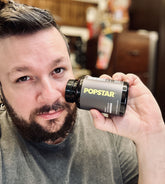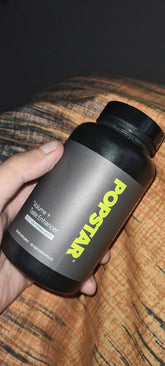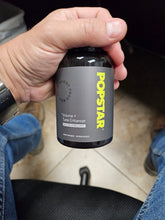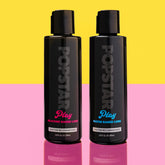Wax Play, in a broad sense, is a form of temperature play that involves dripping or pouring melted wax on the skin for erotic, sensory, or therapeutic effect. While it may sound unconventional to some, this practice has found its place in various expressions of intimacy and sexual wellness. This article delves into what Wax Play is, why it can be relevant for men’s health, how it might offer certain benefits, and the key safety considerations you should keep in mind if you choose to explore it.
Table of Contents
- What Is Wax Play?
- Why Is Wax Play Associated with Men’s Health?
- Potential Benefits of Wax Play
- Recommended Types of Wax for Wax Play
- Safe Practices for Wax Play
- Side Effects and Risks
- Frequently Asked Questions (FAQs)
- References
What Is Wax Play?
Wax Play refers to the application of melted candle wax onto a partner’s skin, usually as a component of sensory play or BDSM activities. The allure lies in the combination of temperature, sensation, and aesthetic appeal—the warm liquid that transitions into a sensual drizzle. Practitioners often enjoy the contrast between the heat of the wax and the cool air around them. Though it may appear niche, its history stretches back to various cultural expressions of erotic and ritualistic practices involving heated substances. In many modern contexts, Wax Play serves not only as an intimate activity but also as a method of exploring trust and communication with a partner.
In men’s health conversations, Wax Play may come up as part of a broader dialogue on maintaining a healthy sexual life, exploring new facets of pleasure, and learning to communicate personal limits and desires. BDSM and kink communities emphasize the importance of safety, open communication, and educated experimentation, aspects that align well with standard principles of sexual well-being.
Most commonly, Wax Play uses specially formulated candles with lower melting points. This ensures the wax does not cause severe burns or lasting skin damage. However, one must keep in mind factors such as individual skin sensitivity, allergies to certain candle ingredients (like dyes or fragrances), and the importance of testing wax temperature before full application.
When performed responsibly, Wax Play can be a powerful tool for deepening intimacy, especially in relationships where partners value open dialogue, exploration, and controlled risk-taking. Yet it is not without potential downsides, which is why understanding the fundamentals of safe practice and preparation is essential. Throughout this article, we address both the joys and concerns related to Wax Play, specifically focusing on men’s health contexts that prioritize overall well-being, sexual exploration, and a responsible outlook toward somewhat unconventional erotic practices.
Why Is Wax Play Associated with Men’s Health?
At first glance, Wax Play might not obviously connect to men’s health. However, men’s health extends well beyond basic physical markers like cholesterol levels or blood pressure. It encompasses mental, emotional, and sexual well-being, areas where Wax Play can intersect with personal growth and relationship enrichment.
For instance, stress and anxiety have a profound impact on a man’s overall health, and sexual experimentation has been noted in certain studies to foster deeper emotional connections, improved self-esteem, and reduced stress levels. Wax Play encourages a high level of communication and trust, forming a unique bond between partners. This open interaction can potentially address not just sexual desires but also stress management in a relationship.
Another notable aspect is the mindfulness and body awareness that often accompany temperature-based play. Men who explore Wax Play under safe conditions sometimes report enhanced sensory perception, better understanding of their own pain or pleasure thresholds, and a willingness to communicate these nuances to their partners. Such transparent dialogues within intimate settings can ripple out to general well-being, as men become more attuned to taking charge of other areas of their health.
Furthermore, Wax Play is about more than just sensation; it can also serve as a gateway to improved mental health via the release of endorphins. Endorphins function as the body’s natural ‘feel-good’ chemicals, offering a mild euphoric experience that can reduce overall tension. By participating in meticulously planned, consensual Wax Play sessions, men may find new outlets for managing stress and fostering emotional intimacy. Like any sexual exploration, the real gains come from mutual respect, honest communication, and understanding personal boundaries.
Potential Benefits of Wax Play
Exploring erotic frontiers can yield unexpected gains in mental clarity, emotional stability, and relationship dynamics. While Wax Play might sound intimidating or strictly sexual, its potential benefits can be quite diverse.
- Heightened Sensory Experience: The sensation of warm wax solidifying on the skin can quickly shift from gentle heat to a mildly stimulating tingle, a range that encourages people to remain present in the moment.
- Stress Relief and Relaxation: Engaging in novel forms of play can give participants a short-lived escape from daily worries, releasing tension and offering mental reprieve.
- Deepened Emotional Connection: Partners who enjoy Wax Play often find that the trust required for such activity helps strengthen their emotional bond. This is especially true if both individuals openly communicate before, during, and after a session.
- Enhanced Communication: Temperature play necessitates verbal check-ins, particularly when navigating the fine line between pleasurable warmth and discomfort. This practice can empower men to speak up about their needs and foster empathetic awareness of a partner’s boundaries.
- Boosted Self-Esteem: Exploring new sexual or sensual territory can be a confidence builder. Showing initiative in the bedroom and discovering that your partner is open to your suggestions can bolster a healthy self-image.
- Opportunity for Creative Expression: For some, part of the fun lies in the artistic aspect—dripping patterns or designs on the skin. This creative endeavor can further personalize the experience, making it more memorable and fulfilling.
As with any provocative practice, the benefits hinge on mutual consent, mindful preparation, and a willingness to adapt based on feedback. Men who approach Wax Play from a perspective of discovery, safety, and honest dialogue can harness these advantages in ways that accentuate—not hinder—their overall well-being.
Recommended Types of Wax for Wax Play
The core principle for selecting wax suitable for Wax Play is its melting point. A lower melting point translates to a lesser risk of burns, which means safer experimentation. Almost all kink and BDSM resources recommend paraffin or soy-based candles designed specifically for body play. However, you may also encounter beeswax candles or blended formulas on the market.
Below are some common candle types and their characteristics:
- Paraffin Wax: Often used in traditional candles. It generally has a relatively low burning point, making it feasible for careful temperature play. However, some may be sensitive to additives, so be sure to select unscented or skin-safe variants where available.
- Soy Wax: A popular option among those leaning toward natural alternatives. Soy wax tends to have a lower melting point and is generally regarded as more moisturizing than paraffin. Be aware of potential additives such as fragrances or dyes.
- Beeswax: Although beeswax offers a pleasant, mild scent, it has a higher melting point compared to paraffin or soy. This property can increase the risk of burns, especially for beginners. If you decide to use beeswax, exercise extra caution and test the wax thoroughly before applying to sensitive areas.
- Massage Oil Candles: Some candles explicitly state that they are “massage candles.” These candles often have formulations containing oils or moisturizers that help the wax melt at lower temperatures. When poured onto the skin, they double as a warm liquid massage treatment.
Regardless of candle type, always perform a ‘patch test’ on a safe area, like the back of your hand or forearm, before proceeding with a full session. This quick test not only helps guard against excessive heat but also clarifies any potential allergic response from dyes, scents, or other candle ingredients.
A final recommendation: purchase candles made specifically for Wax Play or those marketed as body-safe. Regular household candles can sometimes contain harmful chemicals or produce dangerously high temperatures upon melting.
Safe Practices for Wax Play
Safety, above all, is crucial when experimenting with any form of temperature play. Below are best practices designed to minimize risk and maximize enjoyment during Wax Play:
- Accessibility of Safety Gear: Keep a bowl of cool water or an ice pack within reach. Having immediate access to cooling agents can help if the wax is accidentally too hot or if unexpected discomfort arises.
- Test Wax Temperature: Heat the candle and then let a drop of wax fall onto your wrist or forearm. If it’s painfully hot, allow the candle to cool slightly before applying more. Aim for pleasantly warm, not scalding.
- Monitor Distance: The distance from which you drip wax also affects temperature. Dripping from several inches above the skin allows wax to cool slightly mid-air, lowering the heat upon contact.
- Protect Sensitive Areas: Certain body parts, like the genitals, nipples, or areas with thinner skin, may be more prone to burns. Start with less sensitive regions, such as the back, shoulders, or thighs, especially if you are new to Wax Play.
- Establish a Safe Word or Signal: In BDSM and kink contexts, a pre-agreed safe word allows either party to halt the session immediately if it becomes overwhelming or painful. For men exploring new boundaries, having this verbal security net can reduce anxiety and increase enjoyment.
- Mind Your Surroundings: Wax can easily splatter beyond the intended target. Protect bedding or furniture with a drop cloth or old sheets, and keep flammable objects away from your play area.
- Maintain Good Hygiene: Wash hands, skin, and any tools before starting. If you are reusing candles or equipment, store them properly and consider their cleanliness over multiple sessions, especially if they come into contact with bodily fluids.
- Avoid Overheating Wax: A double-boiler setup or specialized wax warmer can melt wax at a consistent, safer temperature than direct flame. Not only does this reduce the risk of burns, but it also helps the wax maintain more uniform consistency.
Approaching Wax Play carefully reduces the chance of injury, making your experience both safe and pleasant. For many, these guidelines can transform a potentially risky activity into a fulfilling exploration that respects personal boundaries, fosters clear communication, and promotes an overall sense of well-being.
Side Effects and Risks
Despite the potential benefits and pleasurable aspects of Wax Play, understanding possible side effects and risks is essential. Failure to adhere to safety protocols can turn what should be a fun, intimate experience into an emergency. Below are some risks to keep on your radar:
- Burns: If the wax is too hot or dripped from too close, first-degree or even second-degree burns are possible. Cool water or aloe vera gel can help in mild cases, but severe burns may require medical attention.
- Allergic Reactions: Dyes, fragrances, or other additives in candles might trigger skin irritation, redness, or rashes. A patch test is the simplest way to avoid a widespread allergic flare-up.
- Scarring: Repeated burning or prolonged exposure to temperatures beyond safe limits can lead to scarring, though this is rare if you practice Wax Play responsibly.
- Skin Sensitivity: People with certain skin conditions like eczema, psoriasis, or chronic dryness might experience heightened sensitivity or irritation. Consultation with a healthcare provider can offer personalized guidance.
- Infection Risks: If skin does get damaged or if wax peels off with hair and creates micro-tears, open areas might invite infection. Cleaning the area before and after is advised, and watch for signs of infection such as redness, swelling, or prolonged discomfort.
- Emotional Distress: Engaging in any form of erotic or BDSM-related practice can unearth unexpected emotional responses. If a participant experiences anxiety, flashbacks, or emotional distress mid-session, it’s essential to stop and address these concerns immediately.
Understanding these potential outcomes underscores the importance of a deliberate, educated approach to Wax Play. Taking time to prepare and being attentive to your own and your partner’s boundaries helps you navigate these risks effectively. Should you encounter serious issues, discontinue play and consult a medical professional for proper care.
Frequently Asked Questions (FAQs)
Is Wax Play safe for beginners?
Yes, it can be if done carefully. Start with lower-temperature wax and test on a small patch of skin to gauge heat tolerance. Communication with a partner is crucial: discuss boundaries, set a safe word, and proceed gradually.
Which body parts are best for Wax Play?
Areas with thicker skin and fewer nerve endings—like the back, shoulders, or thighs—are generally recommended. Avoid extremely sensitive areas until you and your partner have more experience controlling temperature and drip distance.
Does Wax Play hurt?
The sensation ranges from a mild warmth to a sharp sting, depending on factors like wax temperature, the distance it’s dripped, and individual pain thresholds. Many people find the warmth pleasurable. Communicating discomfort is key to ensuring it doesn’t become painful.
How do I remove wax from the skin?
Wax usually cools and hardens quickly. Peel it gently using your fingers, a credit card edge, or a specialized toy if necessary. Taking a warm shower helps soften and loosen any stubborn remnants, making removal easier.
Are there any allergies or irritations to watch for?
Yes. Fragranced or dyed candles may cause skin irritation or allergic reactions. A quick patch test can help identify problematic waxes. If you notice redness, itching, or persistent irritation, discontinue use and clean the area thoroughly.
Can I combine Wax Play with other forms of sensory play?
Absolutely. Wax Play is often integrated into broader BDSM scenes involving impact play, role play, or bondage. However, layering different stimuli can heighten intensity, so pay attention to safe words and stay extra vigilant to ensure it remains enjoyable.
Do I need special equipment or protective gear?
It’s wise to have protective covers like old sheets or drop cloths on surfaces to catch stray wax. Keep a small bowl of cold water or ice packs at hand. Fire safety tools, such as a candle snuffer or water source, are also recommended.
Is there a recommended frequency or time limit for Wax Play sessions?
There’s no universal guideline. Some people indulge in Wax Play occasionally, while others integrate it more regularly into their intimate routines. The key is to honor your body’s signals and allow ample recovery time if you experience skin irritation.
What if I get burned?
Immediately cool the affected area with cold water for several minutes. If the burn is severe, shows blistering, or remains painful beyond a few hours, consult a medical professional. Prevention is always best, so consistent temperature checks are essential.
How can Wax Play impact my relationship?
Many couples find that exploring forms of erotic play together fosters communication and trust. Wax Play, in particular, demands attentive dialogue about comfort levels and boundaries, which can, in turn, improve relationship dynamics and emotional closeness.
Should I consult a healthcare provider before trying Wax Play?
While not always necessary, those with skin conditions, chronic pain, or specific circulatory issues should seek guidance from a medical professional. Discussing concerns openly helps ensure that any risks are addressed, allowing you to play more confidently and safely.
References
- Crooks, R. & Baur, K. (2017). Our Sexuality. Cengage Learning.
- Nordling, N. (2014). BDSM & Kink: A Reference for Newbies, Explorers, and the Curious. BDSM Educators Collective.
- American Psychological Association. (2020). The Intersection of Mental and Sexual Health.
- Moser, C. & Kleinplatz, P. (2007). DSM-IV-TR and the Paraphilias: An Argument for Removal. Journal of Psychology & Human Sexuality.
- Sexual Medicine Society of North America. (2021). Integrating Sexual Health into Overall Wellness.




















































